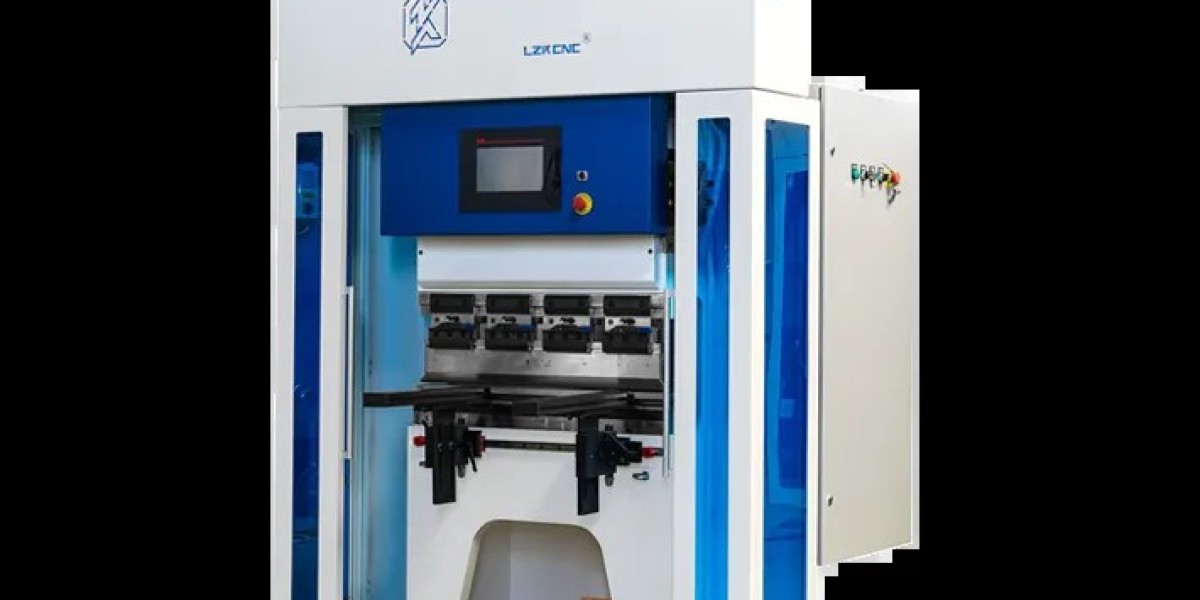Hydraulic press brake machines are essential tools in metalworking, enabling precise bending and forming of sheet metal. However, like any industrial machinery, its performance and longevity depend on regular maintenance. Proper care not only prevents costly breakdowns, but also ensures optimal efficiency and safety.
In this guide, we’ll explore how hydraulic press brake machines work, maintenance tips toextend the service life of hydraulic bending machines.
Hydraulic Press Brake Machines
How Does a Hydraulic Press Brake Machine Work?
A hydraulic press brake machine operates using hydraulic cylinders to apply force to a punch, which then bends the metal sheet against a die. The hydraulic system provides consistent and powerful pressure, making these machines ideal for handling thick and tough materials.
Key components of a hydraulic press brake machine:
1. Frame:Provides structural support and stability.
2. Hydraulic System:Generates the necessary force for bending.
3. Ram/Punch:Moves downward to press the sheet metal.
4. Die:The metal is bent over the die to achieve the desired angle.
5. Control System:Can be manual, NC (numerical control), or CNC (computer numerical control) for automation.
10 Maintenance Tips for Hydraulic Press Brake Machines
1.Regular Inspection and Cleaning
Dust, debris, and metal shavings can accumulate over time, leading to machine inefficiency. Regularly inspect and clean the hydraulic press brake machine to prevent contamination that could affect its components. Pay special attention to:
l Worktable and bending tools
l Hydraulic components
l Control panels and electronic parts
2.Monitor Hydraulic Fluid Levels and Quality
Hydraulic fluid is the lifeblood of the machine, affecting performance and durability. To maintain hydraulic efficiency:
l Check fluid levels regularly and top up if necessary.
l Replace hydraulic oil at recommended intervals.
l Ensure oil is free from contaminants such as dirt and moisture.
l Use only manufacturer-recommended hydraulic fluids.
3.Inspect and Replace Worn-out Seals and Hoses
Over time, hydraulic seals, gaskets, and hoses deteriorate due to pressure and temperature fluctuations. Conduct routine inspections for:
l Leaks in hydraulic lines
l Cracked or worn-out seals
l Loose hose connections
Replacing faulty components promptly prevents major hydraulic failures and costly downtime.
4.Lubricate Moving Parts
Proper lubrication reduces friction and wear on essential components. Regularly grease:
l Guide rails and bearings
l Bending tools and clamps
l Cylinder rods
Always use the recommended lubricant to avoid residue buildup that could impair functionality.
5.Check and Align Tooling
Misaligned tools lead to poor bending accuracy and machine strain. Ensure:
l The punch and die are correctly aligned.
l Tools are properly secured.
l Tooling surfaces are clean and free from damage.
Using high-quality, well-maintained tools enhances precision and minimizes excessive wear on machine parts.
6.Monitor Electrical and Control Systems
Faulty electrical connections can disrupt machine operation and cause malfunctions. Regularly:
l Inspect wiring and connectors for damage.
l Test safety switches and emergency stop functions.
l Ensure the CNC system or control panel is functioning correctly.
Updating software and calibrating control systems improves efficiency and accuracy.
7.Calibrate Bending Force and Pressure Settings
Excessive force or improper pressure settings can damage machine components. Regular calibration helps:
l Prevent overloading the hydraulic system.
l Maintain consistent bending quality.
l Reduce unnecessary strain on the press brake structure.
8.Train Operators on Proper Usage
Operator error is a leading cause of press brake issues. Conduct training sessions on:
l Correct machine operation
l Safety protocols
l Identifying early signs of malfunction
A well-trained workforce ensures that the machine is used properly, reducing wear and tear.
9.Store the Machine Properly When Not in Use
If the machine will be idle for an extended period:
l Cover it to protect against dust and moisture.
l Relieve hydraulic pressure to reduce strain on seals.
l Perform a thorough inspection before resuming operation.
10.Schedule Professional Servicing
While in-house maintenance is essential, periodic professional servicing helps identify potential issues before they escalate. An expert technician can:
l Perform in-depth system diagnostics.
l Identify hidden wear and tear.
l Provide advanced calibration and component replacements.
Conclusion
A well-maintained hydraulic press brake machine delivers reliable performance, enhanced safety, and a longer operational lifespan. By following these maintenance practices, you can prevent costly repairs, improve efficiency, and ensure uninterrupted productivity. Investing time in regular upkeep pays off with extended machine durability and optimal output.
For more hydraulic bending machine maintenance tips, you are welcome to consult our professional bending machine expert attony@lzkcnc.comat any time, we will reply you within 24 hours!









